-

Mindstorms
A history of freedom in Western culture traces the evolution of this cherished idea from ancient times to the modern day. Reprint. National Book Award winner. NYT. -
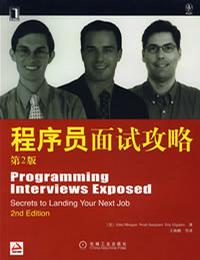
程序员面试攻略
《程序员面试攻略》介绍程序员在求职过程所面临的求职沟通和程序设计技能两个方面的问题。在程序设计技能方面,《程序员面试攻略》介绍了作为一名程序员必须具备的一些知识并以简洁实用的方式介绍程序员的基本功。强调沟通方法是《程序员面试攻略》的亮点,《程序员面试攻略》包括如何编写一份重点突出的个人简历,如何与猎头公司和人力资源代表打交道,在面试时如何与面试考官进行沟通等内容。 -
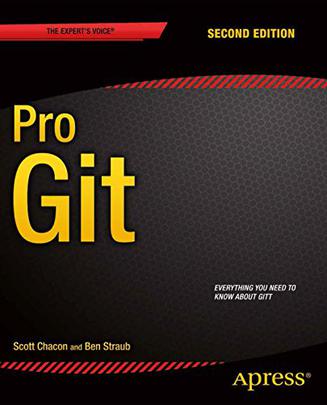
Pro Git (Second Edition)
Scott Chacon is a cofounder and the CIO of GitHub and is also the maintainer of the Git homepage ( git-scm.com ) . Scott has presented at dozens of conferences around the world on Git, GitHub and the future of work. Ben Straub is a developer, long time contributor to Libgit2, holder of a Masters degree, international speaker and Git teacher, avid reader, lifelong explorer, and student of the art of making fine software. He lives with his wife and two children in Portland, Oregon. -
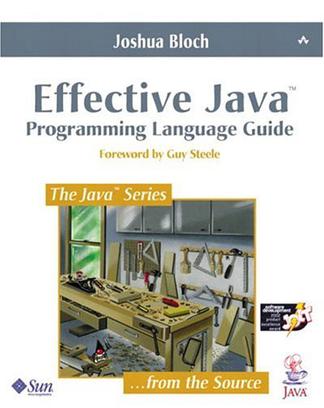
Effective Java
Effective Java Programming Language Guide distills the hard-won wisdom of today's best Java programmers into 50 techniques for designing and constructing more robust, high-performance software. Josh Bloch, one of Sun's most widely respected Java developers, focuses on the practical problems virtually every Java developer encounters, offering specific solutions and top-notch code examples. Josh Bloch identifies 50 practices that lead directly to better code -- including better alternatives for common practices that have proven undesirable in real-world development. The techniques are specific, thoroughly explained, and supported by top-notch code examples. Among the highlights: why developers should avoid finalizers; when to use delegation instead of inheritance; and how to make the most of Java's powerful typesafe enum pattern. Nearly all 50 practices relate to the "core" of the Java platform -- the language itself -- making the book relevant to virtually every Java developer. -
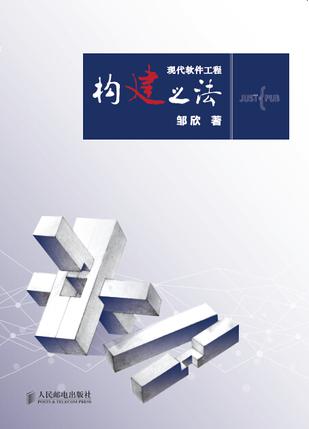
构建之法
内容简介: 软件工程牵涉的范围很广, 同时也是一般院校的同学反映比较空洞乏味的课程。 但是软件工程的技术对于投身IT 产业的学生来说是非常重要的。作者邹欣有长达20年的一线软件开发经验,他利用业余时间在数所高校进行了长达6年的软件工程教学实践,总结出了在16周的时间内让 同学们通过 “做中学 (Learning By Doing)” 掌握实用的软件工程技术的教学计划,并得到高校师生的积极反馈。在此基础上,作者对软件工程的各个知识点和技能要求进行了系统性整理,形成教材。 本书共分17章,对照美国ACM/IEEE2013年新出版的计算机科学教学指导(Computer ScienceCurricula 2013)中的软件工程相关部分,这本教材覆盖了其中大多数Core-Tier1和Core-Tier2的内容。可以说,全书对软件工程内容的覆盖不逊于任何一本现行的教材,同时讲述了业界最新实践方法。 本书评论: 推荐软件工程专业学子阅读,了解软件工程真正内涵,懂得“工程”二字真正含义,知道软件工程和计算机科学的区别。了解之后,就知道为何软件工程是就业含金量较高的行业了。 ——朝红阳(http://weibo.com/u/1794892070)/中山大学软件学院 书中 设想了大量的场景“学”和“习”,并且用了大量的类比,非常生动有趣。这本教材也对软件工程课老师提出了更高的要求;对学生而言,同样面临着要付出怎样的努力才能学到“干货”的选择。 ——鞠小林(http://weibo.com/jukxy)/南通大学软件学院 关于计算机科学与软件工程的差别?这是我们学生问的最多的,这下有解释啦!包括书中谈到的师生关系、软件工程师的职业发展、职业道德等,这些内容我上课时都可以用。 ——牛慧娟/华中科技大学软件学院 面对在软件开发方面经验很少的学生,邹欣老师通过丰富生动的故事和隐喻帮助学生建立软件工程的思维习惯,通过严格扎实的动手训练与考核帮助学生总结归纳自己的“最佳实践经验”。读这本书,软件工程课不再枯燥沉闷,而是变得出乎意料的生动有趣。 ——王忠杰(http://weibo.com/travellingwithme)/哈尔滨工业大学计算机科学与技术学院 读完《构建之法——现代软件工程》,不禁惊叹,软件工程的书还可以这样写!像团队和流程、敏捷流程、需求分析、设计与实现这些章节我看了又看,看完之后不禁拍大腿(书里说的“拍脑门、拍胸脯、拍屁股”的三拍有点不全,还差“拍大腿”):为什么邹欣老师会把原本无趣的问题写得这么吸引人?我深深地感觉到,不会讲故事的软件工程老师不是好老师!这本书给我最大的感受是,作者能把一个个鲜活的例子(或故事)与软件工程的相关问题恰到好处地结合起来,让软件工程的理论和方法更好地落地。 ——王赞(http://weibo.com/scswz)/天津大学软件学院 将对软件工程思想的理解内化为软件工程师的职业习惯,是软件工程教学的核心目标,本书的实验设计恰恰非常有助于这一内化过程。个人项目、两人项目和团队项目由易到难,循序渐进,不断总结。我在教学中借鉴这一思路,从学生较为熟悉的编程训练入手,以范例演示基本编码规范、 No Design时的代码、经过基 本Modularity (also called separation of concerns)设计的代码、writing code to make it reusable on future projects以及一些特殊的接口设计……从编码实践中理解软件工程思想,就会跳出纸上谈兵的框框。 ——孟宁(http://staff.ustc.edu.cn/~mengning/,http://weibo.com/mengning997 ) /中国科技大学软件学院 软件工程在大学是最难讲,也是最容易讲的一门课,容易在这门课涵盖的内容和外延特别丰富,这些内容学生基本没概念,短期也无法落到实处来验证有用没用,所以老师可以大讲特讲,人畜无害;难在你要在学生一片空白(没有很强的代码能力、没有团队概念、没有项目经验)的情况下去让他们懂得这些东西。在我认识的人中,能有丰富的项目经验又愿意花时间在教学实践上,最终能把各种知识理论体系化的人寥寥无几。邹欣老师恰好这几点都具备。快速翻完整本书,最大的感受是这本书出版得恰逢其时,传统的软件工程教材早就该翻新了! ——徐亚波(http://ss.sysu.edu.cn/~xyb,http://weibo.com/arber)/中山大学软件学院 -
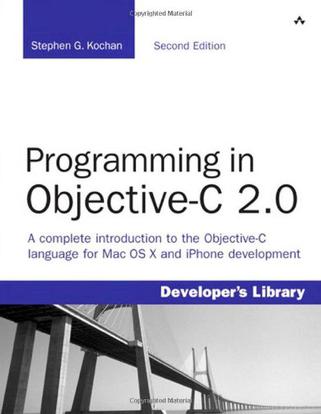
Programming in Objective-C 2.0
THE #1 BESTSELLING BOOK ON OBJECTIVE-C 2.0 Programming in Objective-C 2.0 provides the new programmer a complete, step-by-step introduction to Objective-C, the primary language used to develop applications for the iPhone, iPad, and Mac OS X platforms. The book does not assume previous experience with either C or object-oriented programming languages, and it includes many detailed, practical examples of how to put Objective-C to use in your everyday iPhone/iPad or Mac OS X programming tasks. A powerful yet simple object-oriented programming language that's based on the C programming language, Objective-C is widely available not only on OS X and the iPhone/iPad platform but across many operating systems that support the gcc compiler, including Linux, Unix, and Windows systems. The second edition of this book thoroughly covers the latest version of the language, Objective-C 2.0. And it shows not only how to take advantage of the Foundation framework's rich built-in library of classes but also how to use the iPhone SDK to develop programs designed for the iPhone/iPad platform. Table of Contents 1 Introduction Part I: The Objective-C 2.0 Language 2 Programming in Objective-C 3 Classes, Objects, and Methods 4 Data Types and Expressions 5 Program Looping 6 Making Decisions 7 More on Classes 8 Inheritance 9 Polymorphism, Dynamic Typing, and Dynamic Binding 10 More on Variables and Data Types 11 Categories and Protocols 12 The Preprocessor 13 Underlying C Language Features Part II: The Foundation Framework 14 Introduction to the Foundation Framework 15 Numbers, Strings, and Collections 16 Working with Files 17 Memory Management 18 Copying Objects 19 Archiving Part III: Cocoa and the iPhone SDK 20 Introduction to Cocoa 21 Writing iPhone Applications Part IV: Appendixes A Glossary B Objective-C 2.0 Language Summary C Address Book Source Code D Resources